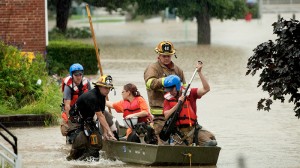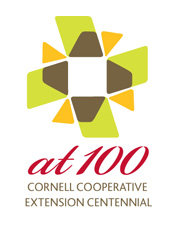 As I drive my children to their after-school activities, I’ve noticed more and more for sale signs along the roads around our house – a sure sign of spring! As we approach house-hunting and moving season, it’s a good idea to look at the evidence on house-hunting. [Read more…]
As I drive my children to their after-school activities, I’ve noticed more and more for sale signs along the roads around our house – a sure sign of spring! As we approach house-hunting and moving season, it’s a good idea to look at the evidence on house-hunting. [Read more…]
The evidence on house-hunting
Deciphering the evidence on mental health in youth
 We often hear in media reports about the rise of autism and attention disorders in our society. A few years back, New York magazine ran a feature article titled, “Is Everyone on the Autism Spectrum?” that described the “cultural epidemic” of identifying with an autism-spectrum disorder such Asberger’s, obsessive-compulsive disorder or attention deficit disorder. But are these maladies really growing at alarming rates? And are our youth at risk? [Read more…]
We often hear in media reports about the rise of autism and attention disorders in our society. A few years back, New York magazine ran a feature article titled, “Is Everyone on the Autism Spectrum?” that described the “cultural epidemic” of identifying with an autism-spectrum disorder such Asberger’s, obsessive-compulsive disorder or attention deficit disorder. But are these maladies really growing at alarming rates? And are our youth at risk? [Read more…]
Exciting Changes at Evidence-Based Living
 It’s hard to believe that it has been four years since we started this blog! Over that time, we’ve seen our number of readers grow astronomically. We now have more than 8,000 visitors per month. It’s wonderful to see so much interest in how research can help us understand and enhance our everyday lives.
It’s hard to believe that it has been four years since we started this blog! Over that time, we’ve seen our number of readers grow astronomically. We now have more than 8,000 visitors per month. It’s wonderful to see so much interest in how research can help us understand and enhance our everyday lives.
As our audience grows, we are looking for ways to bring in more expert opinions and include evidence on an even broader range of topics. So we’re pleased to announce that he Bronfenbrenner Center for Translational Research – an exciting new center at Cornell – will be sponsoring the blog.
Known as the BCTR, the center was created to advance research that helps solve human problems across the lifespan, from young children to older people. A host of projects look at ways to promote optimal human development throughout life. With a staff of over 60, the expertise available in the BCTR covers the areas you have come to expect from Evidence-Based Living: health, psychological well-being, child-rearing, nutrition, and many others. [Read more…]
Is junk food cheaper?
 It’s a major misconception in our modern society: processed foods like chips, frozen dinners and Happy Meals are not cheaper, but actually more expensive than whole foods like whole grains, fruits and vegetables. While this topic graces our TV screens in shows like Jamie Oliver’s Food Revoluion and our shelves in books like Michael Pollan’s In Defense of Food, the misconception remains among many Americans.
It’s a major misconception in our modern society: processed foods like chips, frozen dinners and Happy Meals are not cheaper, but actually more expensive than whole foods like whole grains, fruits and vegetables. While this topic graces our TV screens in shows like Jamie Oliver’s Food Revoluion and our shelves in books like Michael Pollan’s In Defense of Food, the misconception remains among many Americans.
A few weeks ago, Mark Bittman wrote a column in the New York Times making the case that cost is not what keeps American families from eating healthy meals. Bittman argues that advertising and marketing of snacks and fast food, the addictive nature of unhealthy foods and a lack of cooking skills are to blame for America’s nutrition problems.
It’s a problem that is documented by plenty of evidence, says Christine Olson, a professor of community nutrition at Cornell.
“His article lends some visibility to a fact that is well-known by nutritionists and family economists and amply-substantiated by research,” she said. “A home-prepared family meal is generally more nutritious and cheaper than a family meal purchased at a restaurant, even a fast food restaurant. But the frenetic pace of family life and the relentless advertising by the fast food industry contribute to the widely-held opposite perception. “
Cornell Cooperative Extension has been educating families about this very issue for decades. Its Food and Nutrition Education in Communities program has been helping families gain the knowledge, skills, attitudes they need to eat healthily since the 1970s. Another program called Cooking Up Fun teaches young people about cooking with healthy ingredients.
It’s one of the many ways that Cornell Cooperative Extension is using evidence to help improve the lives of families in New York.
Flooded? Follow the evidence
 A double whammy from Hurricane Irene and Tropical Storm Lee drenched the east coast over the past two weeks leading to swollen rivers, flooded valleys and the destruction of roadways, bridges and buildings from Vermont to Maryland.
A double whammy from Hurricane Irene and Tropical Storm Lee drenched the east coast over the past two weeks leading to swollen rivers, flooded valleys and the destruction of roadways, bridges and buildings from Vermont to Maryland.
As communities in eastern and central New York, from the southern Adirondacks to the Pennsylvania border, continue to struggle under the deluge, Cornell Cooperative Extension has information that can help.
The New York Extension Disaster Education Network, or NY EDEN, is a collaborative network based at Cornell dedicated to educating New York residents about preparing for and recovering from natural disasters.
The network offers dozens of evidence-based tips on how to protect your property, remain safe, and clean-up after serious flooding. Among their recommendations:
- Over half of all flood-related drownings occur when a vehicle is driven into hazardous flood water, according to the Centers for Disease Control. That’s because most people underestimate the force of flood water. It takes only two fee of rushing floodwater to carry away most vehicles. So if you come across an area covered with water, turn around.
- Check for cracks in the foundation, shifted walls and a roofline out of position before re-entering a building that is flooded.
- Turn off the electricity in a flooded building before touching any electrical devices or walking through a flooded basement.
- Furniture that has been flooded and has porous materials such as leather, fabric should be discarded because it will likely produce dangerous molds in your home. For other furniture, take it outside and remove as many parts as possible. Use a solution of one part water and one part ammonia to wipe down the furniture, then move it to a well-ventilated, shady spot to dry. (Wood furniture dried in the sun will warp.)
Stay safe and don’t forget to refer to the evidence when cleaning up after a flood!
Evidence-based energy: What we really know about hydraulic fracturing
A newer method for extracting natural gas from layers of shale deep below the earth’s surface – called hydraulic fracturing or hydrofracking – has ignited debates across the nation. Proponents say that natural gas key to the country’s energy future. (Burning natural gas produces fewer greenhouse gases emissions than coal and oil.) But opponents say this method for extracting it poses risks to ground water supplies.
Over the past several years, Cornell researchers have mounted an unprecedented response to the issue. They’ve stepped up research efforts to collect and develop as much evidence as possible about hydrofracking. And they are reaching out to help individuals and communities across New York to help them make decisions about the benefits and dangers of drilling.
They have created the Cornell Cooperative Extension Natural Gas Resource Center, which is made of a 12 faculty members from a wide array of disciplines—including sociology, environmental sciences, and geology—and 20 extension educators. The group has compiled information for people impacted by hydraulic fracturing including individuals considering leasing their land, community groups, and local governments.
The Resource Center’s web site is a treasure trove of information on the topic including how geologists use seismic data to determine if natural gas is accessible, how to negotiate a lease for gas drilling and the economic impacts of drilling.
If you live in an area where natural gas drilling is a possibility, you’ll definitely want to dig into this resource.
Serious business: The evidence on heat waves
 A massive heat wave is drifting across the United States, extending all of the way from Texas to the Canadian border. So far in July, nearly 1,000 daily high temperature records were tied or broken in cities across the nation, including 12 all-time highest temperature records.
A massive heat wave is drifting across the United States, extending all of the way from Texas to the Canadian border. So far in July, nearly 1,000 daily high temperature records were tied or broken in cities across the nation, including 12 all-time highest temperature records.
What does this mean for all of us? Yes, it’s time to crank up the air conditioner and hit the swimming pool. But more importantly, it means we need to be on the look-out for heat-related illnesses.
Keith Tidball is a senior extension associate in the Department of Natural Resources at Cornell and the coordinator for the New York State Extension Disaster Education Network.
These days, it’s his job to educate people about how to stay safe in the heat. But he also learned a heck of a lot on the topic as an infantry officer in the U.S. Army. “I saw my share of strapping young guys become injured – sometimes permanently – from heat-related illness,” he said.
Keith offered three facts to help everyone stay safe during a heat wave:
- Heat illnesses can quickly become life-threatening. In fact, according to the National Weather Service, heat is the number-one weather-related killer in the United States.
- Your body is 50 to 70 percent water, and heat causes that water to evaporate. So staying hydrated is the most important thing you can do for your body during heat waves. Water is best, but anything without alcohol or caffeine helps. The best way to know if you’re hydrated is to check the color of your urine. If it’s clear or light-colored, you’re in good shape. If it’s bright or dark yellow, you need to drink a lot more water.
- Prevention is key. Once you’ve had a heat-related injury, you’re more susceptible to the next one. “In the military, you would have to wear a red tape around your uniform to indicate you’d had a heat-related illness in the past,” Keith explained.
He also offered a host of resources from universities and federal agencies about ways to cope with the heat.
- The State of New York offers a fact sheet explaining how to identify heat-related illnesses and what to do in case of an emergency.
- The University of Florida offer tips for older adults to stay cool.
- Texas Cooperative Extension offers tips for people who work outside in the heat.
- Kansas State University provides info on helping dogs and other pets beat the heat.
The bottom line: If you’re urine is not clear when it’s hot out, you’re in danger. So, go ahead, take a break right now and drink some water.
Happy Birthday to Cooperative Extension!
 As Cornell Cooperative Extension celebrates its 100th year, I thought it would be a good time to explain about bit about the Cooperative Extension system. At Cornell, many of us collaborate with Cooperative Extension regularly. But those of you in the real world might be thinking, “What the heck is Cooperative Extension, and why does it matter to me?”
As Cornell Cooperative Extension celebrates its 100th year, I thought it would be a good time to explain about bit about the Cooperative Extension system. At Cornell, many of us collaborate with Cooperative Extension regularly. But those of you in the real world might be thinking, “What the heck is Cooperative Extension, and why does it matter to me?”
The Cornell Cooperative Extension system was created a century ago to serve a function similar to what this very blog serves today – to help share evidence-based information and practices with the general public.
In the age before the Internet, this meant disseminating information in workshops, classes and even visits to local homes and businesses. So the Cooperative Extension system opened offices in local communities with employees who would gather information from university professors, and then disseminate that information to people local communities.
In New York State, the first such office opened in 1911 by a Cornell graduate named John H. Baron. Over the next eight years, 54 more extension offices opened across New York State.
Over the years, Cooperative Extension programs educated New York businesses and families everything from the safest way to defrost a turkey to the best methods for irrigating strawberry fields.
This system developed into a two-way street where community members and businesses pose questions that are funneled to university researchers, who conduct research to find the answers.
Today, Cornell Cooperative Extension is focused on helping families, businesses, government agencies, and other organizations in five key areas: agriculture and food systems; children, youth and families; community and economic vitality; environment and natural resources; and nutrition and health. Cooperative Extension professionals provide information on contemporary issues including renewable energy, early childhood education and cooking with local foods.
The Cooperative Extension System is truly an invaluable resource for helping people and organizations from all walks of life make decisions based on the best available evidence.
Youth development that works: Positive findings on the 4-H program
On EBL, we’ve talked a lot about research evidence on problems affecting adolescents, from alcohol use, to video games, to social networking, to sex (I can hear teens who read this starting to hum the tune to “These Are a Few of My Favorite Things”…).
One might ask: Okay, what about the positive side? We’re glad to say that there’s very encouraging news about a program that really works.
One of the most popular and extensive youth programs in the United States is the 4-H program. There are over 6,500,000 members in the U. S. The 4-H program offers activities for kids from 5-19 who are organized in 90,000 4-H clubs. Throughout its history, 4-H has promoted leadership skills, good citizenship, and life skills development. In recent years, it has branched into health promotion programs (like obesity prevention and fostering physical activity) and science, engineering, and technology (“SET”) programming.
All this sounds great, right? But as EBL readers know, we look for the evidence. And now we have it, thanks to the ground-breaking work of Prof. Richard Lerner of Tufts university, one of the country’s leading experts on youth development. Lerner and colleagues expected that the mentoring from adult leaders and the structured learning that goes on in clubs might lead to number of desireable outcomes for children. This led them to do a longitudinal, controlled evaluation of the impact of being a 4-H member. Beginning in 2002, they have surveyed oaver 6,400 teens across the U. S.
The researchers have issued a major new report, looking at the findings on youth outcomes over nearly a decade. To really dig into the results, you should read the very accessible report. Among the many findings, according to the report summary, is that 4-H participants:
- Have higher educational achievement and motivation for future education
- Are more civically active and make more civic contributions to their communities
- Are less likely to have sexual intercourse by Grade 10
- Are 56% more likely to spend more hours exercising or being physically active
- Have had significantly lower drug, alcohol and cigarette use than their peers
- Report better grades, higher levels of academic competence, and an elevated level of engagement at school,
- Are nearly two times more likely to plan to go to college
- Are more likely to pursue future courses or a career in science, engineering, or computer technology
All in all, very impressive findings. So let’s join in the 4-H pledge (can you find the four “H”s?):
I pledge my head to clearer thinking,
my heart to greater loyalty,
my hands to larger service
and my health to better living,
for my club, my community, my country, and my world.
A pretty good approach to living, and one that seems to work for millions of children and teens!
Canning food at home: The best evidence-based advice
My Pennsylvania Dutch grandmother had an expression: “Eat what you can, and what you can’t – can!”
Okay, take a minute to think about it…
Like many Americans of her generation, she grew up with a kitchen garden, and a major family activity was preserving the summer’s bounty to liven up their diet during the winter. For many people today, canning food is an enjoyable activity and allows them to “eat locally” all winter long. Many people are joining CSAs (community supported agriculture), buying memberships that allow them weekly “shares” of a local farms produce, and preserving some of that food.
Sounds good, right? But a national survey found that many people who process food at home are doing it in a way that puts them at risk for spoiled food and foodborne illness. What’s an avid canner to do?
In steps the National Center for Home Food Processing and Preservation! This wonderful site, supported by the national Cooperative Extension system, has plenty of evidence-based advice for anyone interested in canning food that is delicious – and safe.
What will you find there? Just take a look at the Center’s list of “Seasonal Hot Topics”:
- If you are a home canner, this is the time of year to plan ahead and prepare. Get your equipment and supplies out and inspect them so you are ready when the crops are.
- Many quick pickle recipes call for small, pickling varieties of cucumbers. If these interest you, be prepared by looking ahead to know what kind of cucumbers are needed for your favorite.
- Ready to tackle your food cupboards during spring cleaning? Consult a food storage chart to see when it might be time to throw out some staples and start fresh.
Click on the links for more information. The last item is one that we have many arguments about in my household, with me wanting to throw out anything more than a week old. Who knew that you could keep an open box of cereal for 2-3 months?
And who can resist articles (all based firmly in scientific evidence) on topics like: “Pickling: Not Just for Cucumbers Anymore,” “What to Do if the Freezer Stops,” and “My Banana Chips Don’t Taste Like the Ones in Stores: What Can I do?”
There’s also a multi-media page, with videos of important home food preservation issues and slide shows, too. A tutorial about safe food preservation is a must for the novice, and it is really what this site is all about: preserving delicious food and using the latest scientific evidence to do it safely.
Happy canning!



